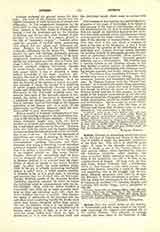

Aversa, Diocese of, comprising twenty-one towns in the Province of Caserta and twelve in the Province of Naples, is under the immediate jurisdiction of the Holy See. This city is of relatively recent origin. It arose in the eleventh century on the ruins of Atella, a city of the Oscians, famous for their piquant raillery, which furnished the basis for the licentious interludes called Atellance. The ruins of ancient Atella, destroyed during the invasions of the barbarians, are still to be seen in the neighborhood of Arpino. On these ruins the Norman Duke, Robert Guiscard, built a fortification which in time became a city called Aversa. The same Duke Robert, becoming a vassal of the pope and supporting him in his struggle with the emperor, obtained permission from Leo IX to have the Bishopric of Atella transferred to Aversa. The city has many fine monuments in the Norman style. It contains 54 parishes; 177 churches, chapels, and oratories; 674 secular clergy, and a population of 130,100.
ERNESTO BUONAUITI

